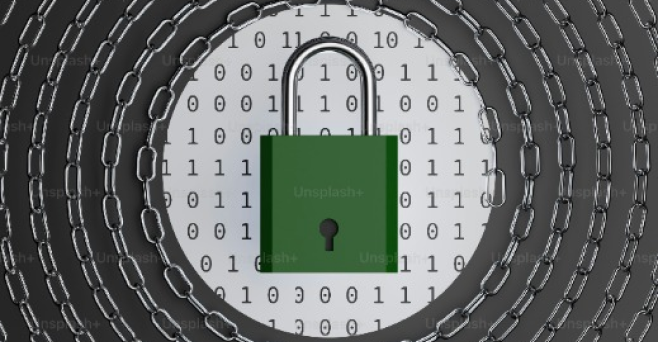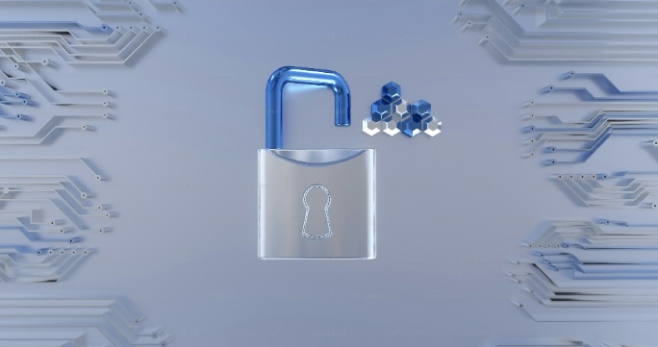Securing the Future
Securing the Future
Navigating the Era of Quantum Computing with Post-Quantum Cryptography and Quantum-Resilient Innovations: The Global Cybersecurity Landscape in 2024 and Beyond

The Cybersecurity Landscape in 2024 - What are the main challenges that organizations face today?
The global cybersecurity landscape in 2024 showcases an era where the complexity and sophistication of threats reach new heights. The advent of cybercriminal activities leveraging cutting-edge technologies underscores the urgency of bolstering cybersecurity measures as attacks against cloud infrastructures, IoT devices, and remote working environments become increasingly frequent.
Adopting cyber-resilience has become crucial for organizations. How does Naoris contribute to this paradigm shift?
Amid these constantly evolving threats, cyber-resilience has become a cornerstone of strategic planning for organizations worldwide. It's a paradigm shift that involves not just fortifying defenses against attacks but also ensuring operational continuity post-incident. The adoption of comprehensive strategies encompassing incident response, business continuity, and disaster recovery, alongside traditional cybersecurity defenses, underscores the critical nature of resilience in today's digital landscape.
Forecasts suggest that the cybersecurity market could surpass $300 billion by 2024. What is your vision on the evolution of this market and the impact of cybercrime on the global economy?
According to recent forecasts, the global cybersecurity market is expected to surpass $300 billion by 2024, thanks to increased investments in cybersecurity solutions.
Moreover, the economic toll of cybercrime is expected to exceed $10,500 billion annually by 2025, highlighting the growing impact of cyber threats on the global economy.
Gartner has highlighted the importance of cybersecurity mesh architecture. Can you explain what this entails and how it changes the traditional approach to cybersecurity?
Gartner's endorsement of the Cybersecurity Mesh Architecture (CSMA) marks a significant advancement in digital security, highlighting its crucial role in accommodating the distributed nature of modern computing environments. This framework advocates for a more adaptable, intelligent, and responsive approach to cybersecurity, moving beyond traditional perimeter-based defenses.
Let's talk about the Naoris protocol. How does your decentralized approach via blockchain enhance security and transparency in the cybersecurity domain?
Not only does it align with the envisioned distributed and resilient model, but it also significantly enhances efficiency. The innovative use of blockchain technology by the protocol heralds a new era of security, transparency, and efficiency in digital trust and collaboration.
What are the unique features of the Naoris protocol that set it apart in the cybersecurity universe? How do you address specific challenges through decentralization and trustless security?
- Decentralization: The Naoris protocol introduces a paradigm shift from a centralized security model to a decentralized one, thereby improving the efficiency of threat detection and mitigation.
- Trustless Security: Blockchain technology facilitates a trustless verification environment, minimizing dependence on centralized authorities and ensuring data sovereignty.
- Real-time Threat Intelligence: The decentralized architecture enables the immediate dissemination of threat intelligence, facilitating rapid adaptation to emerging threats.

Overcoming Key Challenges
The decentralized nature of the protocol inherently fosters scalability, enhances resilience to cyberattacks, and offers a cost-effective alternative to traditional cybersecurity models.
The protocol benefits from the support of industry luminaries and military experts. How has their expertise influenced the development and vision of Naoris?
Tim Draper, a leading tech investor, has played a pivotal role in funding and supporting the development of the protocol and its global deployment.
David Holtzman, former technical director and chief innovation officer at IBM Global Services, and Kjell Grandhagen, former chairman of NATO's Intelligence Committee, have provided invaluable insights leveraging their extensive experience in military command and cybersecurity.
Jack Melnick, Head of DeFi at Polygon Labs, and Elena Gaudette, Chief of Staff at Cisco Cloud Security, bring cutting-edge technological expertise, especially in areas such as Ethereum scaling solutions and confidential computing.
What is your vision for the future of cybersecurity with the advent of quantum computing, and how does Naoris position itself to address future challenges?
The security architecture of the Naoris protocol is bolstered by the knowledge of military veterans such as Inge Kampenes, former head of cyber defense of the Norwegian Armed Forces, and Brigadier General Carlos Ribeiro, former head of the Portuguese Armed Forces' communications and information systems. Their expertise in national and NATO cyber defense strategies significantly strengthens the security standards of the protocol.

Academic Excellence and Collaborations
The development and innovation of the protocol are supported by a network of academics and researchers, including Miguel Oliveira, director of the University of Aveiro, and Professor Nuno Almeida from the Instituto Superior Técnico, who contribute to fundamental and applied research in blockchain security and privacy.
As we approach 2024 and beyond, the Naoris protocol, with its decentralized cybersecurity mesh architecture, stands at the forefront to address the dynamic and complex challenges of the cybersecurity landscape. Supported by a constellation of industry luminaries, military experts, and academic thought leaders, the protocol is poised to redefine the paradigms of digital security and trust, ensuring resilience against the emerging threat of quantum computing and establishing a new standard for future-proof cybersecurity solutions.
